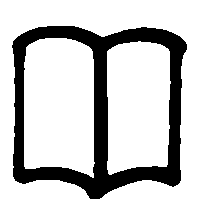For Corners
I was living in a town recently where the residents had a powerful veneration for a shape they had confused themselves with.
They had originally come from a company they wished to escape - that of birds and beetles and fish who’s simple behaviors they had risen above. At that time they had lived off the land, scavenging off scattered nuts and wild grain. They constructed great temples like cones in their old lands, but they had all since been swallowed by sand or overtaken by dense forest: their defeat at nature seemingly insisting on their need for reformation.
The shape they had begun to idolize was initially rare in the land they intended to settle, where things far more resembled gnarled roots and the unsteady snaking of rivers. In very few points did they recognize this shape: perhaps when staring towards the sky, linking vague twinkling specks with lines through sand, or when squinting towards the horizon, often obscured by the territory, could they make out the flat, shear surfaces they were envisioning.
This world was naturally without corners. At that time it was boundless, so they slept scattered in uncomfortable nooks wherever they could find. Oftentimes they would tuck themselves beneath rocks or in hallowed trunks. It was far from ideal, sleeping under the company of crooning birds and under the whirring of crickets and the rumbling of toads.
They had originally come from a company they wished to escape - that of birds and beetles and fish who’s simple behaviors they had risen above. At that time they had lived off the land, scavenging off scattered nuts and wild grain. They constructed great temples like cones in their old lands, but they had all since been swallowed by sand or overtaken by dense forest: their defeat at nature seemingly insisting on their need for reformation.
The shape they had begun to idolize was initially rare in the land they intended to settle, where things far more resembled gnarled roots and the unsteady snaking of rivers. In very few points did they recognize this shape: perhaps when staring towards the sky, linking vague twinkling specks with lines through sand, or when squinting towards the horizon, often obscured by the territory, could they make out the flat, shear surfaces they were envisioning.
This world was naturally without corners. At that time it was boundless, so they slept scattered in uncomfortable nooks wherever they could find. Oftentimes they would tuck themselves beneath rocks or in hallowed trunks. It was far from ideal, sleeping under the company of crooning birds and under the whirring of crickets and the rumbling of toads.
But they believed, like the scope of their vision, that borders were laid somewhere imperceptibly beneath their eyes. They understood that the time had come to raise these borders up. With a spool of thread strung taught between four corners, they declared the boundary of the town that they wished to settle, mirroring the frames of a window or the confines of a sheep’s pen.

When they finally founded the town, delineating its boundaries further with two pairs of perfectly parallel roads, they found that they could not use the gnarled branches of the local trees to build their homes. Rather they looked downwards towards the earth, packing clay into the shape that had been calling to them.
So they began forming bricks, and felt within them the earth bending to their divine order. They began piling their walls and lining their streets. The ground they trampled and walls they built soon hardened, now lain with bricks of such standardized measure that no two portions of wall or ground in the city limits could be distinguished from another.
So too were the small houses they now inhabited – which reflected the form of their bricks, only now hollowed into domestic spaces. They found that within their walls the cacophony of the natural world was no longer amplified – and they could finally sing in tune.
They built larger and larger structures in the shape they so venerated, and encouraged these structures to loom high into the air in order to escape the shamelessly shapeless dust of the earth below. These structures soon (through mere obstruction) began to frame the blue of the sky and crop the edges of drifting clouds. Which, in all appearances, began to be far more recognizable.
The lakes they bathed in soon came out of fashion, and they constructed public bathhouses and private pools in which to seek privacy and relax. Soaking in these new bodies of water, hollowed to the new shape of course, they considered themselves far more civilized than their predecessors that would run wild and naked with the will of the tide.
They decided their furniture must match their homes - so they thossed out animal-hides and log benches in favor of coffee tables and marble countertops. They likewise slept in beds that resembled their shape, and before long their dreams began to exist within that very same framework.
They dedicated their communal knowledge to books that followed the pure geometry and clear order of their holy structure in the formatting of a page. They taught largely through diagrams, forming their grammar too within the boundaries specified. Four corners marking the beginning and end of each lesson worth learning.
Their images too, naturally, followed this divine geometry. They found that the world through this frame was legible, clear, concise. It followed what felt to be none other than a divine social order, where everything naturally fit in place. Before long their images, framed up so nicely, could neatly be packed onto the surfaces of their walls and make lavish decoration.
They found their shape at all scales. From above their land began to resemble it - contorting with each passing harvest more so into their ideal vision. Gridded farmland extending forth into the flattest horizon. Plots of grain to be milled into wonderful white sheets of pre-sliced bread.
They constructed useful electrical devices for themselves, and found entertainment in their world displayed through the shape of a tablet. It now glowed brighter and felt vaster with each generation. The shape illuminated perfectly across its perfectly flat surface and perfectly tailored the content to provide contentedness. In that space, they felt as though none of their questions were left unanswered.
They began to interact purely through it, It was faster and more direct - their language soon began to sound more and more like it, more pointed and less rounded. It began with their accent, becoming clearer and more distinguished as the children grew. With the passing of each generation soon their tongue began to lose the names that did not adhere to the shape. They gradually lost the words for the other shapes of the world, and forgot gnarled roots, howling wind, whirring crickets and rumbling toads which had long since been displaced.
Soon the once imperceptible borders they imagined had perfectly enclosed their own shape, and they approached a sense of utter completeness. The world had been outlined - rendered to completion. Only now could they step through and escape their nature which had long since bound them in discomfort.
And so they fit themselves entirely into their holy shape, and soon found the boundary of their body had contorted entirely to fill the confines as specified in the user agreement. There was a major sense of innovation to this final act - something of a break in form, a final escape from the perceived confines of nature. They had birthed a new world, immaculately framed to the exact extent of their vision. Every answer was now apparent and every sentence perfectly understandable. Every body was linked, interlocked perfectly like rows upon rows of countless beautiful bricks.
Unnecessary parts of themselves were cut of course - unable to fit neatly within the rigid boundary. Other parts, deemed as important as the face, butt and build, were to be exaggerated in order to fill the specificity of the ninety-degree angles. With enough bit-tuning, any shape could be realistically filled.
Soon with great ecstasy they were utterly immobilized, and they found what had once been a boundless world was now marked by a boundless number of frames and edges at every scale imaginable, from the pixel to mercator. Few shapes outlived the multiplication of this one - the sun and moon distant enough from the town escaped this fate - as did aspects of their own forms - their teeth and fingerprints still grew to an autonomous geometric blueprint. To most the continued existence of these details were uncomfortable facts - reminders still of an inhuman nature that within the coming ages would finally be unraveled.
Yet, in the time they had spent refining their town, cracks began to form. The hardened bricks, immensely heavy under their compiled weight, crumbled and warp. The taut line of string they had marked the border of their town with had gradually loosened with a harsh tug of wind, tangling in weedy bushes that cropped up on the edges of town. The rain too, almost imperceptibly, would arrive to gradually reconfigure things: weathering sharp edges, rounding every corner.
In that time, the citizens of the town were so enthralled with their new shape, exploring the holy boundary of their skin along the seamless geometry of its borders - that they had yet to notice the setting sun casting long, distorted shadows along the uneven surface of out of tune bricks. Soon night would pass – and they would awake with great anxiety to find anthills in cracks on the sidewalk – echoing the architecture of the lands they had first come from.
︎︎︎ ︎︎︎








